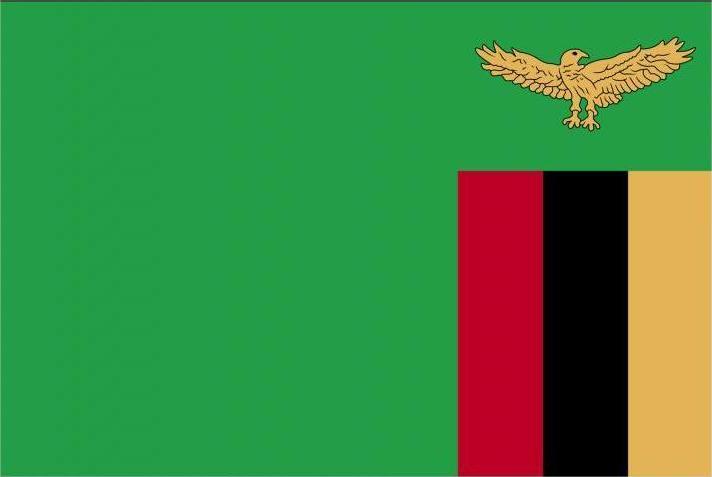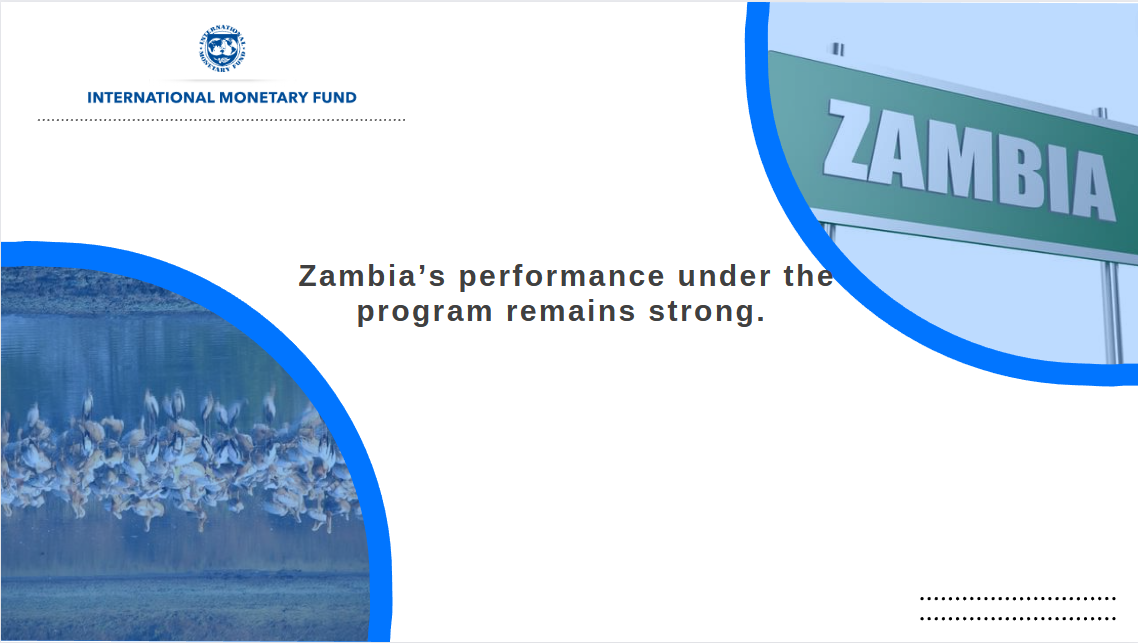Zambia Economic Performance for Half Year ended 30 June, 2023
This article is an independent economic analysis of the performance of the Zambian economy for the first six months period ended 30th June 2023. The evaluation is based on empirical evidence from credible sources – both local and international. The targeted audience are ordinary Zambians who do not understand the technical language of the other economic commentaries available on the market.
The approach that has been taken in assessing the performance of the economy, is somewhat unorthodox and unique, inspired by the graphs controversy. A market-based approach has been used to explain what is happening in the economy. Four main markets that have been identified as the main drivers of the economy. These are: the goods and services market, the money market, jobs market and the foreign exchange market. The approach taken is meant to simply the interpretation of the economic data.
GOODS AND SERVICES MARKET
The goods and services market is the number one driver of the economy. This is where the private sector produces goods and services for various consumers such as businesses, households and the government. This market's performance is measured by an increase in the level of activities that took place during any period under review.
In the first quarter of 2023, private sector activities deteriorated. Businesses were unable to procure and produce goods and services at the level they would have wanted, due to various constraints.
Consequently, they could not employ people, and some even retrenched their staff. Businesses were also not able to pay as much taxes to government due to lower sales and profitability.
The main reasons for the low production levels were shortage of cash (finance); high costs of inputs including fuel due to kwacha depreciation; low demand from consumers; government failure to pay Suppliers and Contractors the billions owed to them, and the Civil Service and Regulatory Agencies'inertia and bureaucracy.
There was, however, slight improvements in business activities in the second quarter months of April and May. The evidence to support this assessment of performance for the first half of the year, was reflected in the Stanbic Purchasing Manager Index (PMI).
The Stanbic Purchasing Manager Index (PMI) Survey measures private sector purchasing activity, output and employment. Any number below 50 indicates poor performance of private sector activity. In the first quarter, this index (number) fell to 46.9 from 49.1 in December, 2022. However, there were signs of improvement starting from April when it rose to 48.7, and this continued to May and June when it increased to 51.4 and 51.2 respectively.
It should also be noted that during the period under review, the cost of living and cost of doing business for households and businesses went up respectively. The proof of the escalation in these costs were captured by surveys carried out by the Jesuit Centre for Theological Reflection (JCTR) and Zambia Statistics Agency (ZSA).
The JCTR food basket increased to K9, 112 in May from K8, 982.82 at end of last year. The ZSA statistics showed that inflation had increased from 9.4% in January, 2023 to a peak of 10.2% in April. At the half year stage of June 30, 2023, however, it dropped to 9.8% which was still higher than at beginning of the year, as well as outside the Bank of Zambia targeted inflation range of 6-8%.
MONEY MARKET
This market is made up of lenders and borrowers. It is dominated by Commercial Banks and the Central Bank (Bank of Zambia), and it deals with the cost of money (interest rates). The cost of money to businesses and households increased during the six month period to 30th June, 2023.
The continued high cost of money was clearly demonstrated by the Bank of Zambia's policy actions. The Central Bank increased the interest rate that it charges banks when lending to them. This is called the Monetary Policy Rate (MPR).This rate was increased from 9.0 % at the beginning of the year to 9.50%, compelling commercial banks to increase their lending rates to their customers too. In general, Banks in Zambia hardly react to changes in monetary policy rates and inflation, unless it is in their favour. This is clearly a market failure which needs to be addressed immediately as one of the post debt restructuring action plans in order to solve cash problems and the low economic activity in Zambia.
The current average Commercial Banks lending rate is in excess of 25%, but Banks pay their savers average interest rates of about 8%, which is below inflation. This is hardly an incentive to save. The difference between the savings rate, inflation rate, monetary policy rate and Commercial Banks'lending rates is in excess of 15%. Banks in well-functioning economies of the region do not earn such margins.
In the international fora, President Hakainde Hichilema has bemoaned interest rates charged to African countries. And as they say: charity begins at home. He needs to address the extremely high interest rates charged by Zambian Banks to remove this long standing hurdle to private sector growth and job creation. There are many possible measures that could be explored. This could include the capping of the amount Banks can invest in Government Treasury bills and Bonds, like government will do to foreign investors as part of the recent debt restructuring deal that was clinched in Paris.
JOB MARKET/ LABOUR MARKET
Zambia currently has a problem when it comes to getting reliable and timely Job Market data. The last Annual Labour Survey Report was in 2021. There are no 2023 Quarterly Labour Survey reports available on the Ministry of Labour and Social Services website, and half year has gone.
The Bank of Zambia and the Ministry of Finance and Development Planning do provide quarterly reports and briefings. It is important that the Ministry of Labour and Social services should also start providing the public with Quarterly Labour Survey reports as their South African counterparts do.
Although there is scanty information on Labour market statistics, information from secondary sources indicates that the Zambian economy was shedding, and not creating jobs in the first half of 2023.The Stanbic PMI reports, and government Suppliers and Contractors confirmed retrenchment of workers.
The high level of unemployment, especially among the Youth, in the last six months and prior periods, can also be inferred from the recent government recruitment exercises. The recruitment of teachers attracted 100,877 for 30,496 positions; medical personnel attracted 137,139 for 11,276 vacancies; Zambia defence forces attracted 236,000 for 5,000 positions; ZRA received 53,345 for 115 vacancies and Ministry of finance received 128 042 applications for the 46,800 temporary census jobs in 2022 Census.
It is vitally important that government ensures that timely collection and publication of Labour statistics is done, if it is to solve the unemployment problem. In the absence of data on labour, how can they craft an effective job creation strategy? It is like shooting in the dark, as the management guru Peter Drucker famously said, “If you can't measure it, you can't manage it.” This is because it is impossible for government to solve the unemployment problem, if it does not know its exact magnitude. It is currently believed that Youth unemployment runs in millions. And if one was to ask: what is the unemployment rate in Zambia in the first half of 2023, it's doubtful if there is anyone with an answer. The Authorities need to realize that in order to solve a problem, the size of the solution has to fit the size of the problem.
FOREIGN EXCHANGE MARKET
During the six month period ended 30 June, 2023, the Kwacha was unstable. It fluctuated from a high of K21.4 to the dollar, to a low of K15/16. In the first quarter, the currency lost 16.8% against the dollar to an average rate of K19.20. And in order to support the Kwacha, the Bank of Zambia withdrew $377million from the country's savings (foreign reserves) and pumped it into the foreign exchange market to facilitate imports because of the high demand for dollars. This resulted in Zambia's foreign exchange savings dropping to $2.9billion at the end of March, from $3.1 billion at end of December, 2022.
In the second quarter, the Kwacha appreciated by 16.8% against the dollar to K17.73 following the IMF staff Level agreement with Zambia. The currency closed the half year with an average exchange rate of K17.40 on 30 June, 2023.The total gain for the month was about 12.6%.
The value of the kwacha is very important to ordinary Zambians because the rate of exchange directly affects their pockets as the cost of living either goes up or down depending on the movement in the rate. This is because the country imports most of its supplies. Zambia's cost of living is in large measure basically imported.
A fluctuating currency, like the kwacha performed in the first six months of the year, is not good for the economy. It creates uncertainty and unpredictability. What is required is a stable currency, which can enable all economic players to plan. The expectation and hope is that the currency will be more stable going forward, after the restructuring deal that Zambia struck with its official Creditors.
FUTURE ECONOMIC PROSPECTS
There is reason to be optimistic about the economic prospects for Zambia in the next 12 months. The uncertainty about the Debt restructuring deal which was constraining so many economic variables has been lifted. Consequently, it is expected that businesses will increase their level of activities with the possibility of some jobs being created.
When one looks at the trend in total economic activities in the last two half years, it does give the country some hope. In 2021, the economy grew by 4.6%. And there was a slight improvement of 4.7% in 2022. It is only rational to conclude and expect that in the light of the recent debt restructuring deal, and the expected recovery of the mining, agriculture and construction sectors, the prospects for higher economic growth rates are quite good.
But in order for economic growth to have any impact on poverty, and to be inclusive, the country's economic activities ought to be increasing above 10 %. And to achieve this growth rate, it requires engagement of experienced local thinkers, who understand Zambia and its culture, in order to generate unique and innovative practical solutions. In addition, the bulk of the targeted growth, should be generated by domestic and Zambian owned businesses so that the wealth stays in the country.
It is apparent from past experience in the mid-2000s – during the copper price boom – that the high economic growth rates of 7% plus that were largely driven by foreign investment, did not make any impact on job creation and poverty levels. The answer is simple: most of the wealth created was being shipped out of Zambia, and the country was a mere transit. This has to change, if the country is to make progress towards development.
As Professor PLO Lumumba observed: “GDP and per Capita income means nothing if you have no money in your pocket. Nobody eats GDP, because it is not edible at all, and what matters is the money in people's pockets”. And his views were supported by African Development Bank President Dr. Akinwumi Adesina who said in his 2020 report: “Growth must be visible. Growth must be felt in the lives of people.
CONCLUSION
The summary diagnosis of the economy's half year performance ended 30 June, 2023, is that both the cost of living and doing business went up, unemployment increased, borrowing interest rates were unaffordable, and there was a general shortage of cash in the economy and our wealth in terms of foreign reserves reduced to $2.9billions. The basic questions that ordinary Zambian citizens would always want authorities to answer as part of economic accountability will be about jobs, cost of living, cost of money, value of kwacha and increase in country's wealth in terms of foreign reserves. And the answers to all these questions are provided by the four main markets and the basic diagnosis has been done in this article.
The debt restructuring deal that Zambia struck with its bilateral creditors towards the end of the half year, should be able to help improve the country's economic performance going forward, if it is accompanied by some common sense practical interventions to improve economic activities, rather than rely on trickle down stimulation strategies, and hoping things will happen by themselves. There is need to guard against complacency, borne out of the excitement of the restructuring deal. Government has to tone down people's expectations because debt restructuring is a balance sheet activity which merely affects cash flow timings and payment deferral. The real focus should now be on income statement related activities of production, income generation and expenditure containment.
The Civil Service bureaucracy and regulatory hurdles, including multiple licences, that are slowing down private sector activities and hindering the emergence and growth of domestic MSMEs, must be removed. There may be a need to the apply Psychologist Douglas Mc Gregor's theory X management style, through heightened supervision and penalties to overcome the inertia.























































First, please LoginComment After ~